Nutrition in Animals Class 7 Notes Science Chapter 2
| Table of contents |

|
| Nutrition in Animals |

|
| Nutrition in Amoeba |

|
| Nutrition in Humans |

|
| Nutrition in Ruminants |

|
Nutrition in Animals
Nutrition in Animals
Nutrition in animals involves the process of ingestion, digestion, absorption, assimilation, and egestion.
Ingestion is the intake of food, digestion is the breakdown of food into simpler substances, absorption is the uptake of soluble substances, assimilation is the use of simple substances to build complex substances, and egestion is the elimination of undigested food from the body.
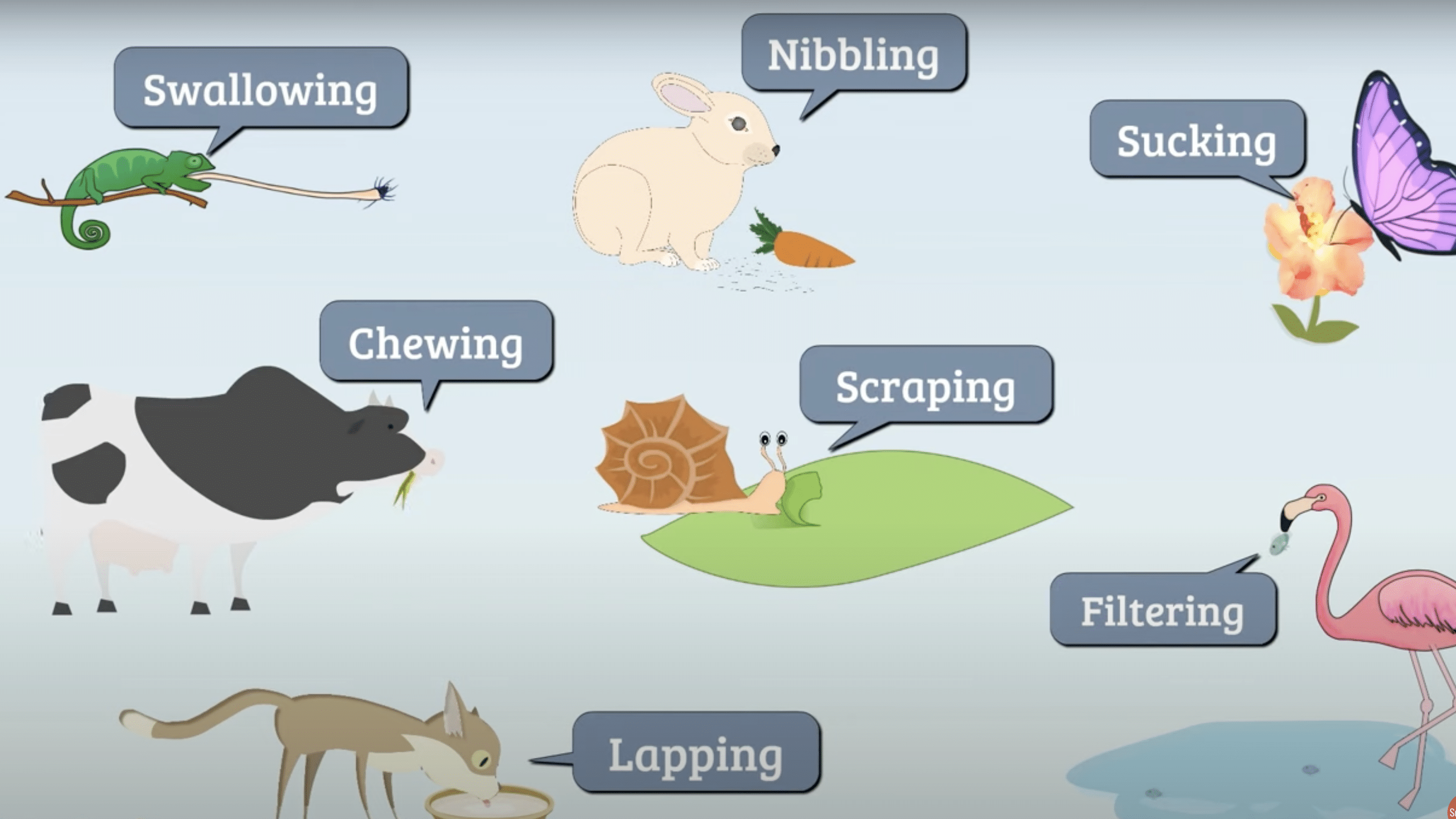 Different organisms have different ways of ingesting food
Different organisms have different ways of ingesting food
Ingestion:
Ingestion is the intake of food into the body.
Different organisms have different ways of ingesting food.
Some organisms use outgrowths on their bodies such as tentacles in Hydra and cilia in Paramoecium.
Small animals like insects and worms have special mouthparts for ingesting food.
Birds have a modified beak to catch and tear/crack food, and different kinds of beaks depending on their food.
Snakes swallow their food whole.
Digestion:
Digestion is the breakdown of food into simpler substances.

Different organisms have different digestive systems.
- Humans have a complex digestive system that The digestive system consists of the alimentary canal(involves the mouth, esophagus, stomach, small intestine, large intestine, rectum, and anus) and accessory organs (involves liver, pancreas, and gall bladder)
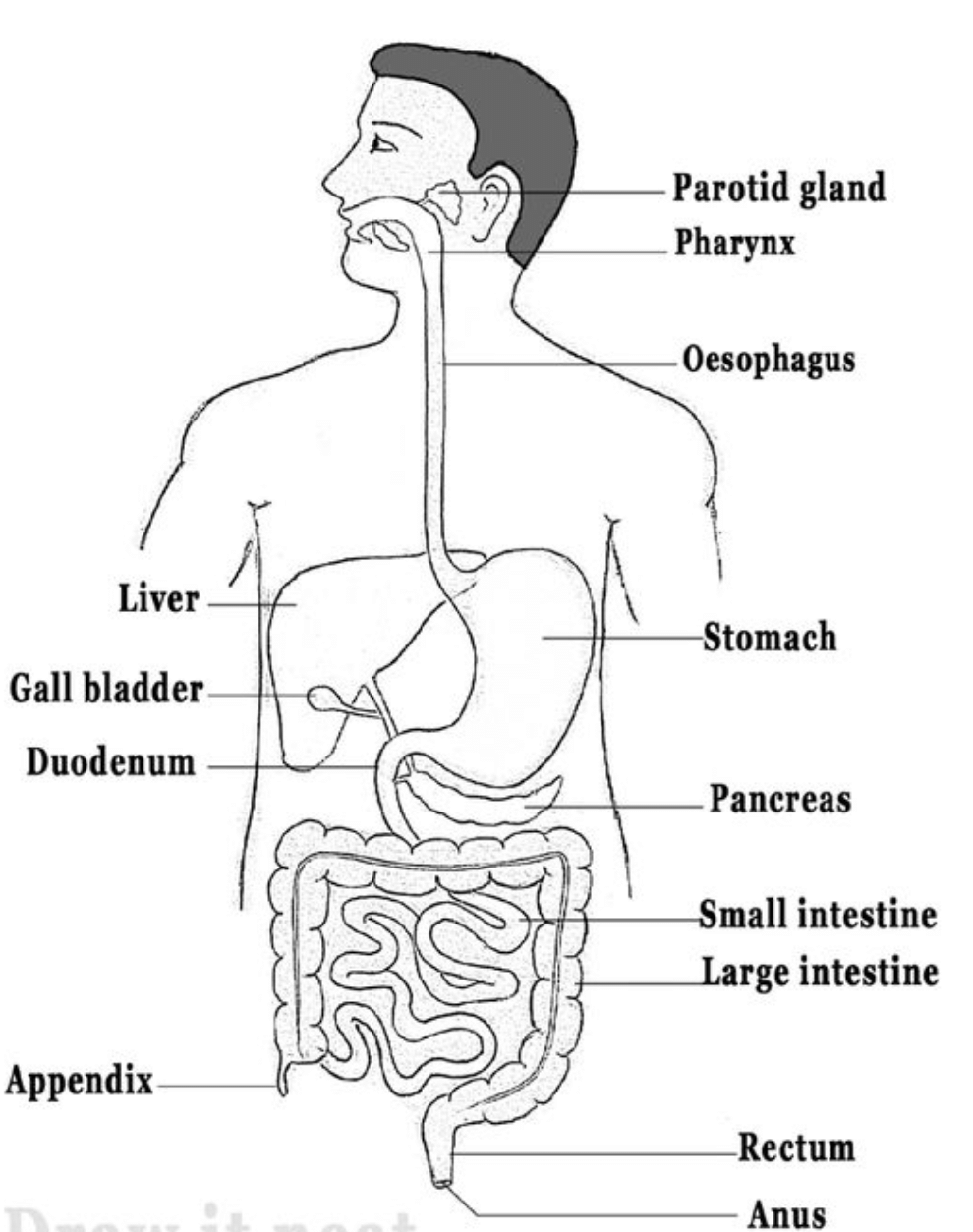 Human digestive system
Human digestive system - Insects have a simple digestive system that involves a tube-like structure called the alimentary canal(the whole passage along which food passes through the body from mouth to anus during digestion)
- Birds have a two-part stomach, one of which contains stones to help break down food.
- Snakes have a long, muscular digestive system that can take days to digest a meal.
Absorption:
Absorption is the uptake of soluble substances produced during digestion by the tissues in the body.
- In humans, absorption takes place in the small intestine where nutrients are absorbed into the bloodstream.
- In insects, absorption takes place in the hindgut.
- In birds, absorption takes place in the small intestine.
- In snakes, absorption takes place in the lining of the digestive system.
Assimilation:
Assimilation is the use of simple substances to build complex substances required by the body.
Different organisms have different ways of assimilating nutrients.
- In humans, birds and snakes assimilation takes place in various tissues and organs throughout the body.
- In insects, assimilation takes place in the fat body.
Egestion:
Egestion is the elimination of undigested food from the body.
Different organisms have different ways of egesting waste.
- In humans, waste is eliminated through the rectum and anus.
- In insects, waste is eliminated through the anus.
- In birds and snakes waste is eliminated through the cloaca.
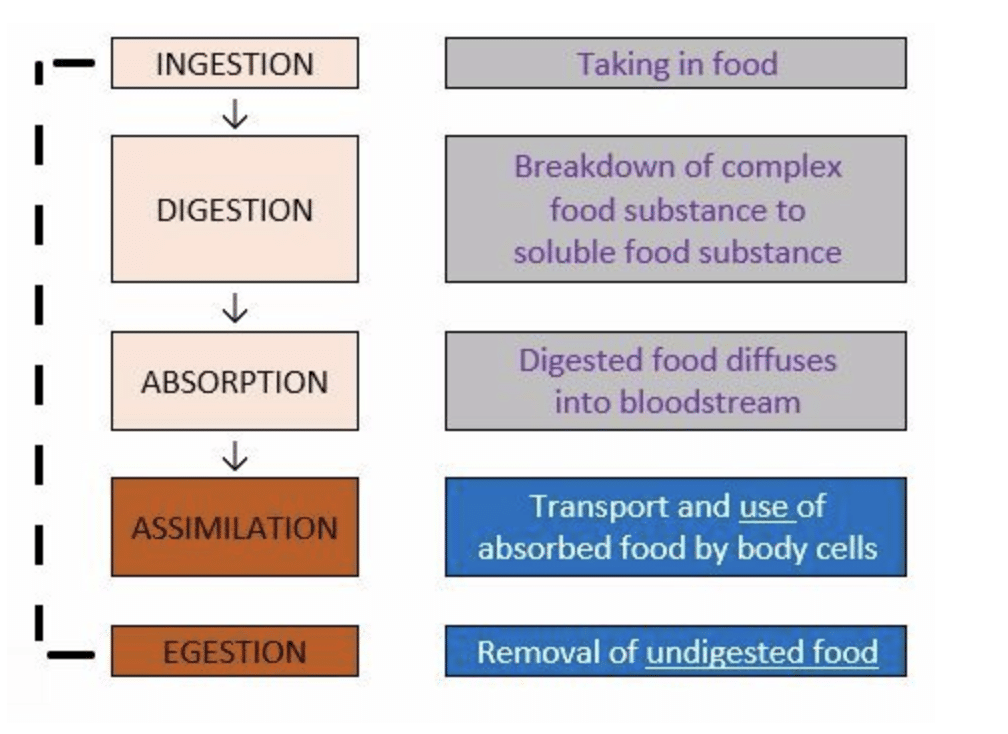
Nutrition in Amoeba
Amoeba is a single-celled organism found in ponds and ditches.
It feeds on microscopic organisms present in water bodies.
Amoeba does not have a structured body like other organisms.
Method of Feeding:
Amoeba engulfs its food using its pseudopodia, which are finger-like projections.
The food is then enclosed in a food vacuole within the cell.
The vacuole releases digestive enzymes, which break down the food into simpler forms.
The nutrients are absorbed into the cytoplasm and the remaining waste material is expelled out of the cell.
Which Nutrients are Required:
Amoeba requires nutrients such as proteins, carbohydrates, lipids, vitamins, and minerals for its survival.
Proteins are needed for growth and repair of the cell.
Carbohydrates are a source of energy for the cell.
Lipids are required for the formation of cell membranes.
Vitamins and minerals are essential for various cellular functions.
Importance of Nutrition:
Nutrition is important for the growth and survival of Amoeba.
Lack of proper nutrition can lead to malnourishment and various health problems.
Adequate nutrition is necessary for the proper functioning of various cellular processes.
Nutrition in Humans
Nutrition in humans is a complex process that involves the digestive system.
Ingestion
Ingestion is the process of taking food into the body through the mouth. It is the first step in the process of digestion.
Teeth and Their Functions
Different types of teeth help in breaking down food into smaller pieces. There are four different types of teeth in humans: Incisors, Canines, Premolars, and Molars.
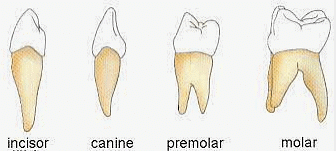
Incisors: They are flat, blade-like teeth that are for cutting food into smaller pieces.
Canines: They have sharp edges and are used for tearing food.
Premolars: They have broad surfaces and help in chewing and grinding food.
Molars: They are large back teeth used primarily for grinding food.
Humans develop two sets of teeth in their lifetime. The temporary set has 20 teeth, which are also called the milk teeth. The permanent set has 32 teeth.
Each jaw contains 16 teeth.
These teeth are categorized as follows
- Four incisors
- Two canines
- Four premolars
- Six molars
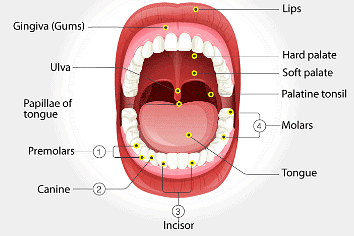
Taking Care of Our Teeth
Bacteria are present all around us, including in our mouths. While not all bacteria are harmful, poor oral hygiene can lead to harmful bacteria growth. Food particles and saliva form a thin, sticky layer called plaque on the surface of teeth. Plaque that is not removed by brushing produces acid, which dissolves the hard tooth enamel. This can lead to the formation of cavities.
The Tongue
The tongue is a fleshy muscular organ present in the mouth. It helps to mix saliva with the food while chewing and also helps in swallowing. The tongue is also a very important sense organ and has taste buds, which help to sense four different tastes: sweet, salty, bitter, and sour.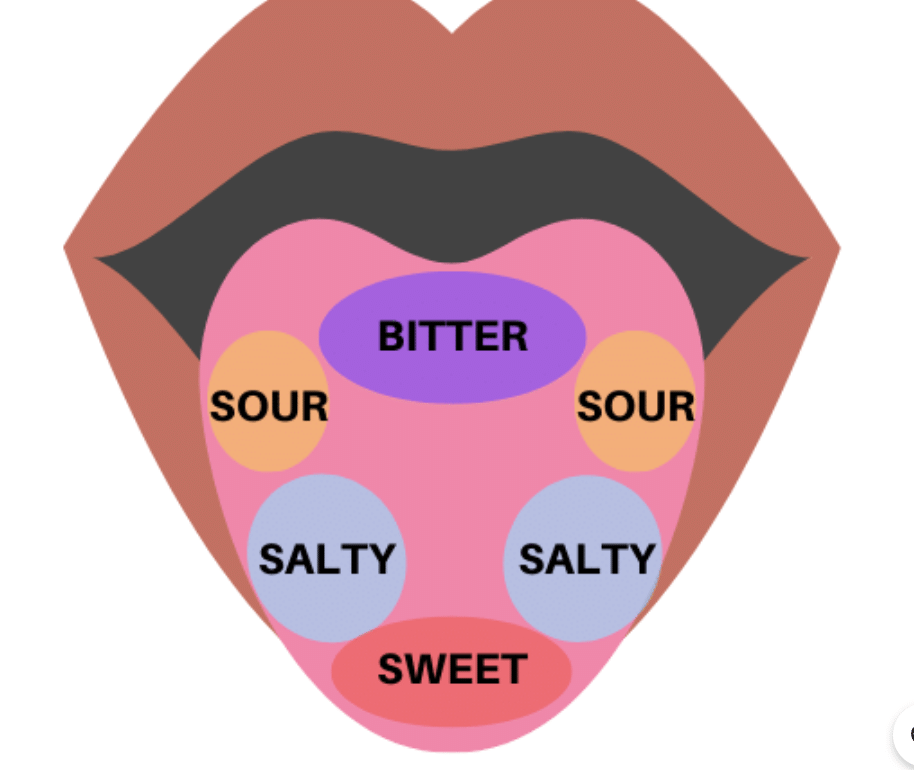
Digestion
The process of digestion starts in the mouth with the mixing of food with saliva.
Saliva contains digestive juices that help in the breakdown of starch into sugar.
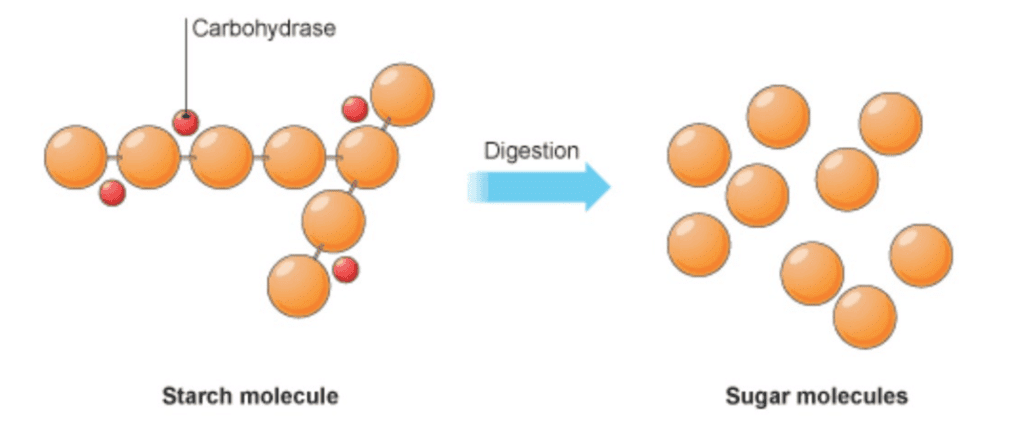
Once swallowed, food passes through the oesophagus and into the stomach.
The stomach secretes digestive juices, hydrochloric acid(HCl), and mucus to break down proteins into simpler forms.
- The chyme(a thick semifluid mass of partially digested food and digestive secretions that is formed in the stomach and intestine during digestion) passes from the stomach into the small intestine, where liver and pancreas secretions are released.
The liver secretes bile, which helps in the digestion of fats, and is stored in the gall bladder.
The pancreas secretes pancreatic juice that helps in the breakdown of carbohydrates, proteins, and fats.
The digestion of various components of food is completed in the small intestine.
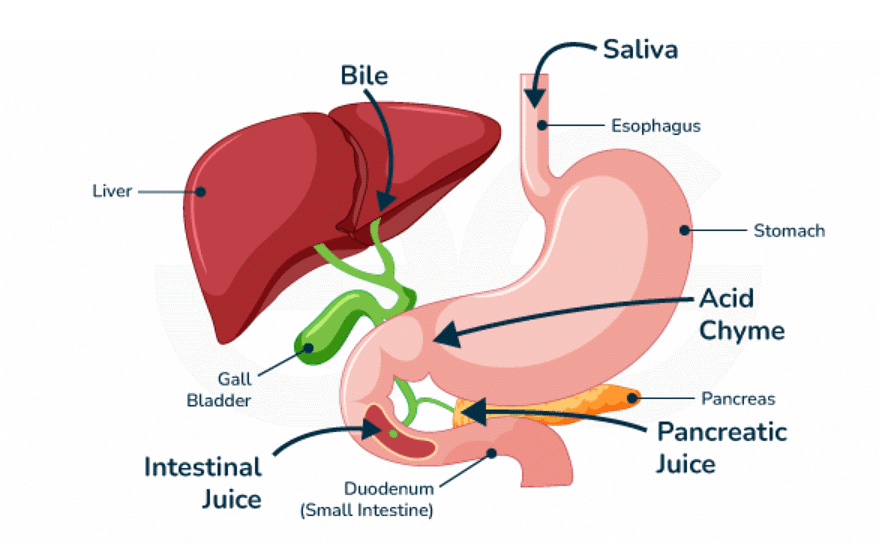 Human digestive system
Human digestive system
Absorption
The main job of the small intestine is to absorb the nutrients obtained as a result of digestion.
The lining of the small intestine has finger-like projections called villi that increase the surface area of the lining for more efficient absorption.
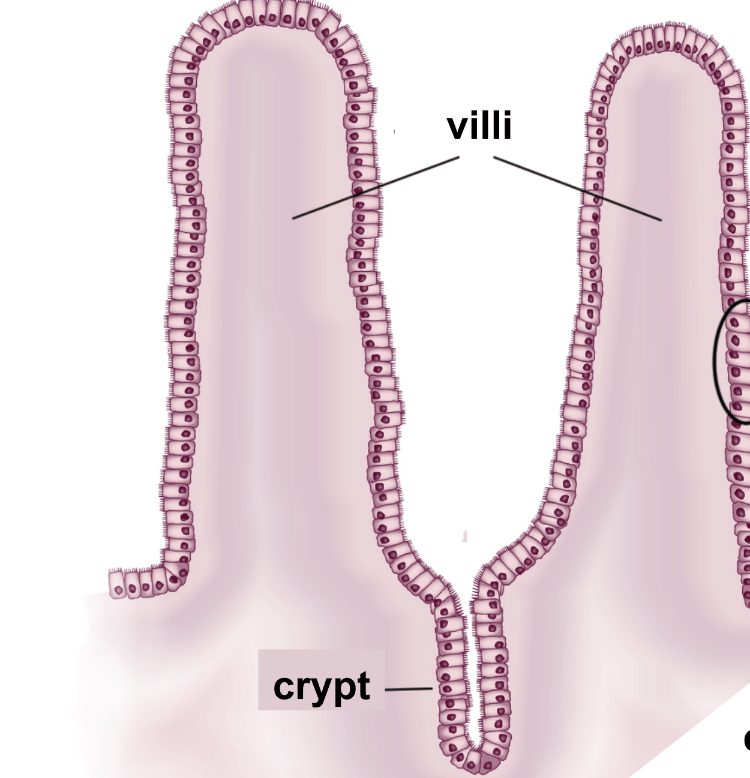
Nutrients are absorbed into the blood present in the fine blood vessels in each villus.
Assimilation
The nutrients absorbed in the blood are transported to the rest of the body.
Glucose is broken down into carbon dioxide and water in the cells with the help of oxygen to release energy.

Amino acids(final product of proteins) are used for repairing worn out cells and tissues.
Fatty acids and glycerol(final product of fats) act as energy reserves and are stored for further use.
Egestion
After absorption of water and minerals in the large intestine, the remaining waste material is stored in the rectum and eliminated from the body through the anus.
Hiccups occur when the diaphragm, a muscle below the lungs, contracts involuntarily.
Nutrition in Ruminants
The process of bringing back swallowed food into the mouth to chew it again is called Rumination.
Ruminants are plant-eating animals like cows, goats, sheep, buffalo and deer that swallow their food after chewing once.
Ruminants have a different digestive system than humans.
Ingestion
Ruminants ingest their food with the help of their tongue and have sharp incisors and large molars for biting and chewing grass.
They have powerful jaw muscles to help with the process.
Digestion
- After being chewed once, the food passes down the oesophagus, which leads into the stomach.
- The stomach of a ruminant has four chambers: rumen, reticulum, omasum, and abomasum.
- The rumen helps in storing a large quantity of food that has been quickly consumed and partially digests the food into cud(food brought up into the mouth by a ruminating animal from its first stomach to be chewed again).
- The reticulum helps in moving the swallowed food back into the mouth for thorough chewing.
- The omasum absorbs excess water, and the walls of the abomasum secrete digestive juices.
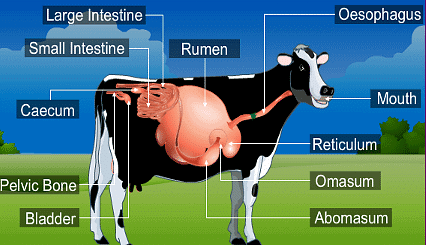
Absorption
Absorption begins in the four-chambered stomach, but the main absorptive organs are the intestines.
The food from the abomasum passes into the small intestine, where most of the digestion of carbohydrates, proteins, and fats takes place.
The small intestine has several villi that help in increasing the surface area for absorption.
The large intestine's main function is to absorb water and eliminate the undigested food as faeces.
Ruminants do not have canines as sharp as carnivores because they do not need them to tear meat. Instead, they have large molars to chew their plant-based diet.
Key Words:
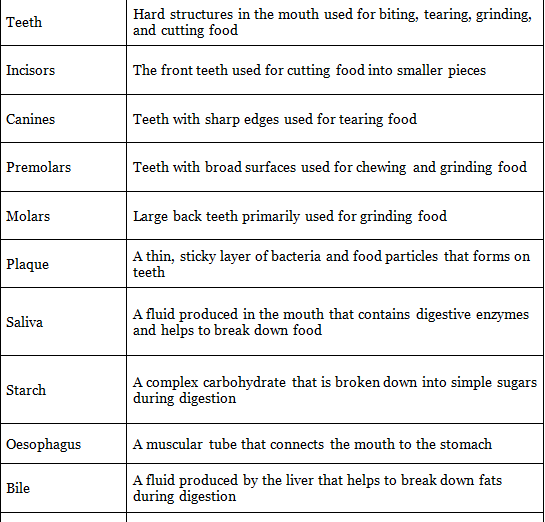
Activity:-
Aim: Investigating how saliva affects food
Materials: Bread, watch glass, petri dish, iodine solution, and your own saliva
Method:
Take a small piece of bread and test for starch using iodine solution. If it turns blue-black, then there is starch present.
Take another piece of bread and place it in the petri dish.
Add four drops of your saliva to the bread and leave it for some time.
Test for starch again on the part where saliva was added.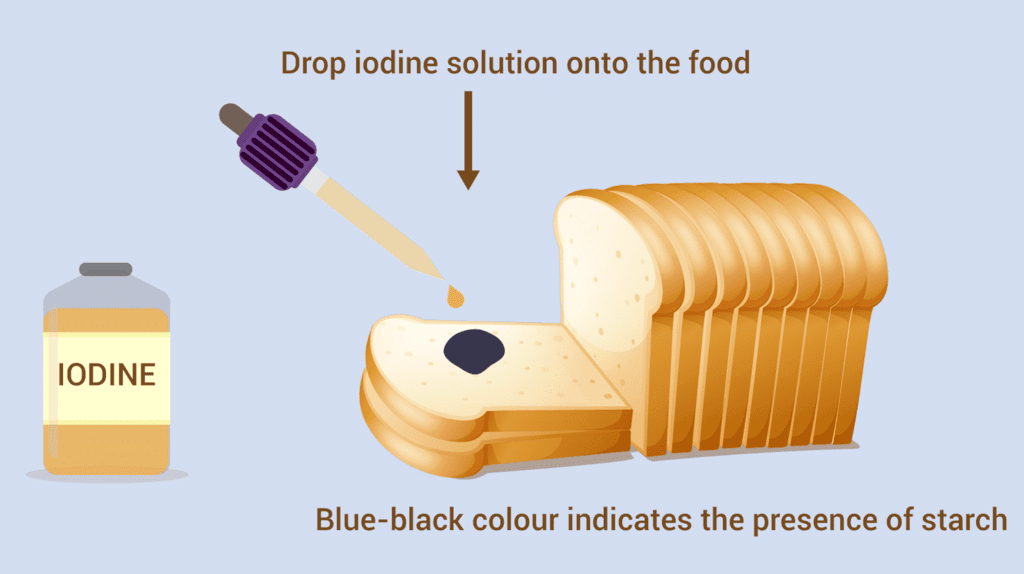
Observation: The bread with saliva did not change colour.
Conclusion: Saliva's digestive enzymes convert starch into sugar, which results in a negative starch test.
|
139 videos|151 docs|18 tests
|
FAQs on Nutrition in Animals Class 7 Notes Science Chapter 2
| 1. What is the process of nutrition in Amoeba? |  |
| 2. How do humans obtain nutrition from food? |  |
| 3. How do ruminants digest their food? |  |
| 4. What are the different types of nutrition in animals? |  |
| 5. How does the process of nutrition differ between unicellular and multicellular organisms? |  |
















